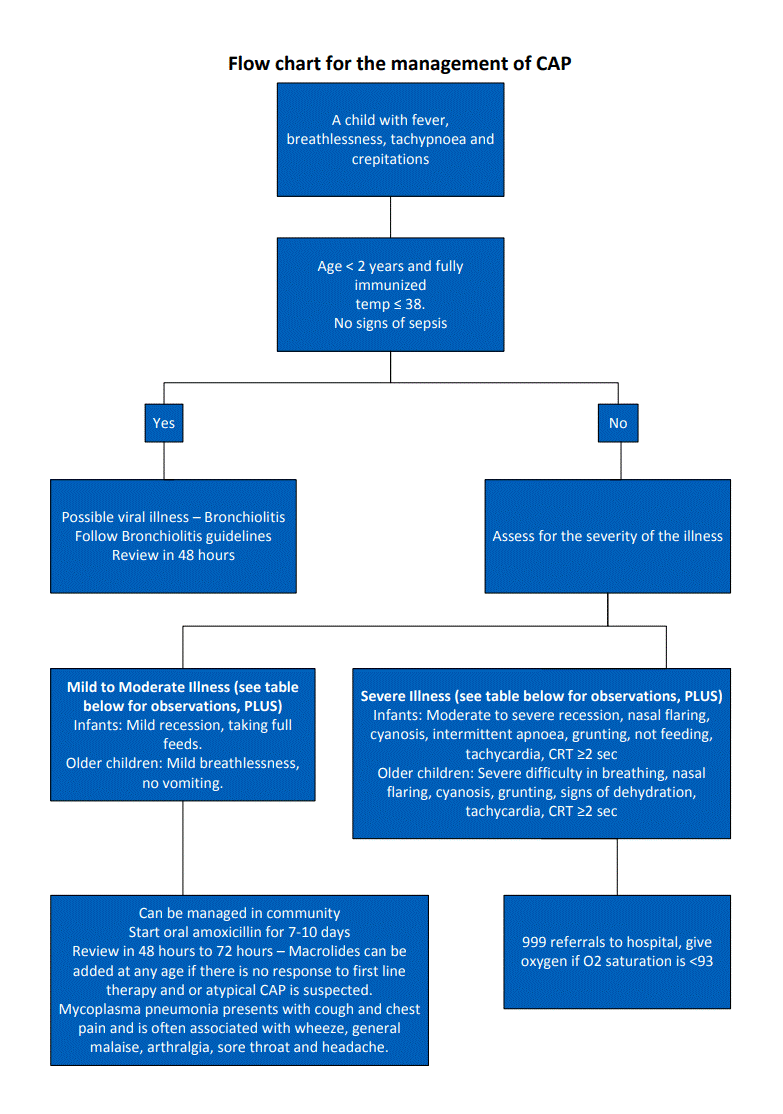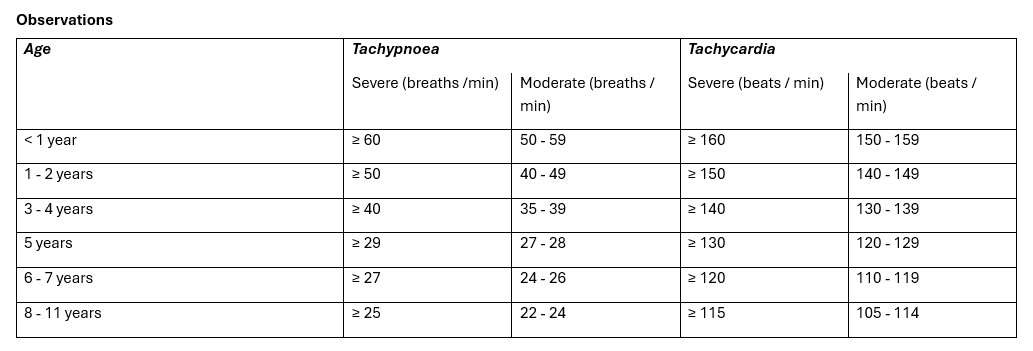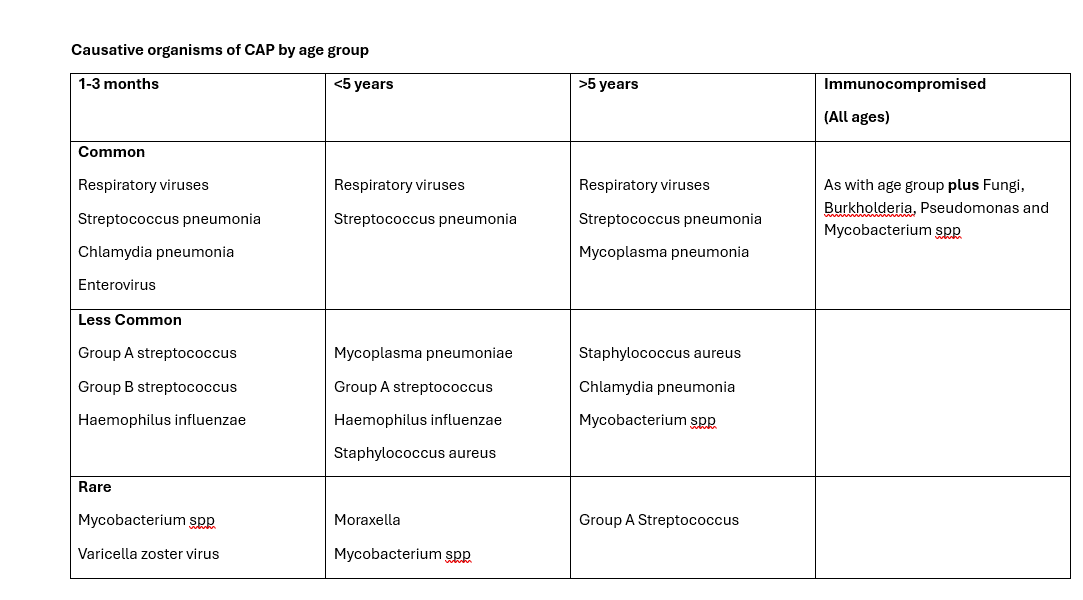Community Acquired Pneumonia (LRTI)
Definition/Description
Introduction
Community acquired pneumonia is defined as a clinical diagnosis of pneumonia caused by a community acquired infection in a previously healthy child.
In 2015, community acquired pneumonia (CAP) accounted for 15% of deaths in children under 5 years old globally and 922 000 deaths globally in children of all ages.
Causes of CAP
Defining causative organisms is a challenge. Clinical and radiological features do not reliably distinguish between viral and bacterial aetiology, and obtaining cultures from the lower respiratory tract of young children is tricky.
CAP Aetiology Varies with Age
Respiratory viruses are common, particularly in infants, accounting for 30-67% of hospitalised cases. Respiratory syncytial virus accounts for 30% of viral aetiology. Other viruses include parainfluenza, influenza, and human metapneumovirus.
Introduction of pneumococcal conjugate vaccine has significantly reduced the rates of CAP.
Streptococcus pneumoniae is the commonest bacterial cause across all ages, accounting for 30-40% of the cases. Other bacterial causes include group A streptococcus and, in infants, group B streptococcus.
Staphylococcal aureus is associated with round pneumonia, a well-defined round area of consolidation visible on chest x ray.
Despite a well-established vaccination programme, Haemophilus influenza remains prevalent in the UK, albeit at lower rates.
Mycoplasma pneumoniae accounts for up to a third of all cases and is a common cause of atypical CAP.
Red Flag Symptoms
-
History of underlying comorbidities:
-
Bronchopulmonary dysplasia
-
Disorders of mucus clearance (such as cystic Fibrosis)
-
Congenital heart disease
-
Immunodeficiency
-
Severe cerebral palsy
-
-
History of severe pneumonia (inpatient stay requiring oxygen, paediatric intensive care admission, complications of CAP (such as lung abscess, effusion, empyema)
-
Recurrent pneumonia
Guidelines on Management
DOs in CAP management
-
Carry out full physical examination.
-
Give oral antibiotics (first choice amoxicillin) if child can tolerate orally.
-
Give oxygen therapy if oxygen saturation is less than 93%.
-
Good safety netting on discharge - prevent dehydration, identify deterioration.
-
IV fluids and IV antibiotics only in children who cannot tolerate orally.
DON’Ts in CAP management
-
Perform routine CXR
-
Carry routine blood test including CRP
-
Give IV antibiotics and IV fluids when child can tolerate orally
-
Hospital follow up in uncomplicated pneumonia
-
Follow up CXR in children with uncomplicated pneumonia
Referral Criteria/Information
No Referral Criteria/Information Listed
Additional Resources & Reference
Associated Policies
Places covered by
- East Riding
- Hull
Hospital Trusts
- Hull University Teaching Hospitals


